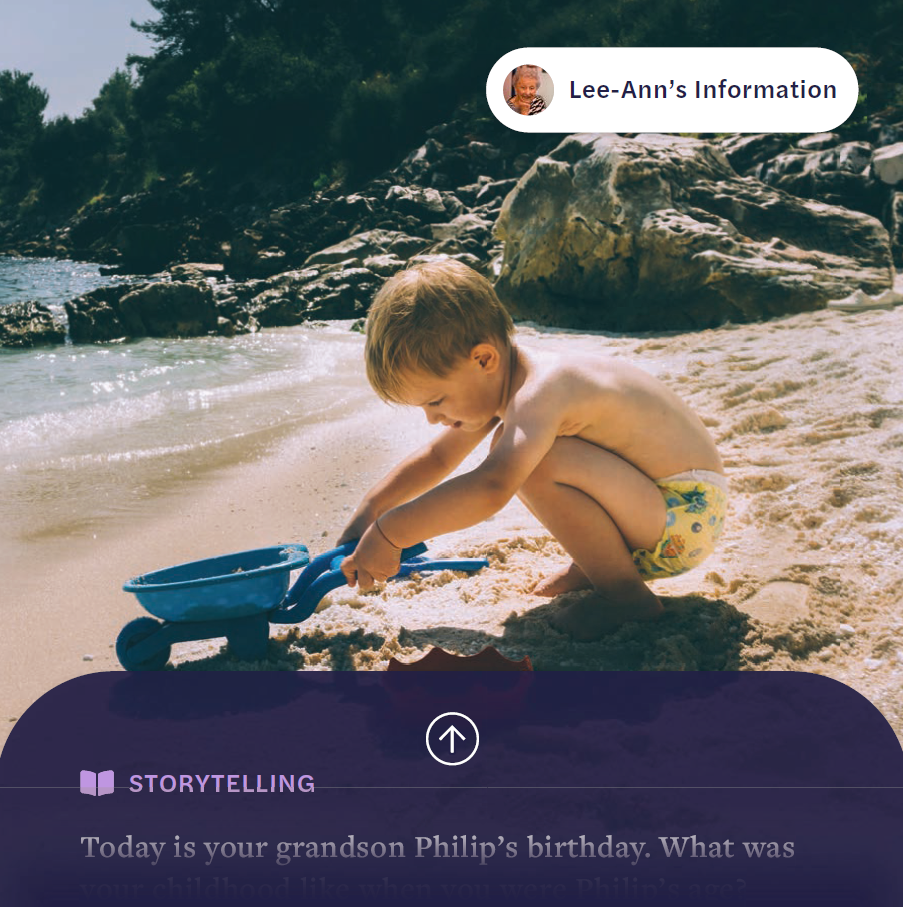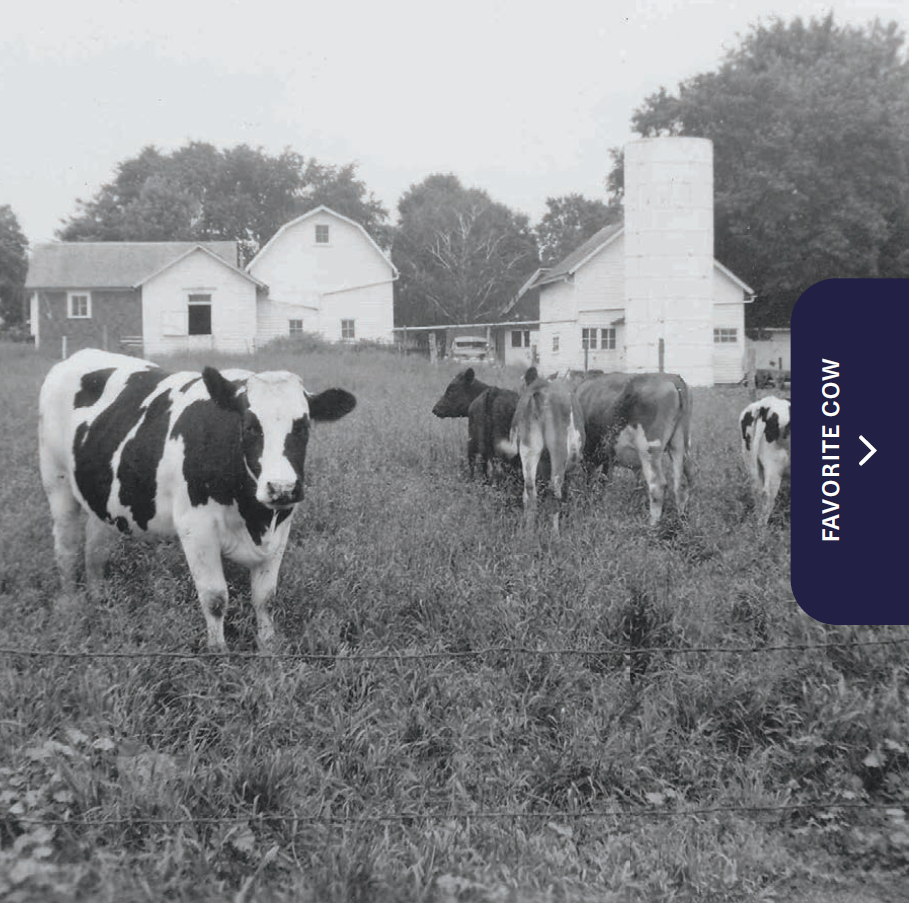How IBM Watson’s Machine Learning Can Build Trust Between Dementia Patients and Caregivers through Storytelling.
UI element of the cube interface showcasing in-situ prompt between caregiver and patient
Overview
Everyone loves a good story. But did you know that storytelling may be a tool that can help dementia patients?
The Cube is a studio collaboration with the IBM Watson Health Team that explores Watson's machine-learning capabilities to build trust between a dementia patient and caregiver. This intervention focuses on an often-overlooked stakeholder; the caregiver, and explores possibilities for an interface that helps dementia patients maintain autonomy and task adherence.
Timeline
Feb - April 2020
Research Question
“How might machine learning be used to effectively assist a caregiver in maintaining the autonomy of a patient through the stages of dementia and increasing caregiver custody? ”
Stakeholders
Team:
Gloria Jing, Jack Ratterree, Eryn Pierce
IBM Watson Health Team:
Debi Ndindjock, Aisha Walcott-Bryant
Results
The cube introduces new narrative and spatial methods in dementia care by leveraging human connection to build empathy.
Rather than creating a shipped product, we created a prototype demonstrating possibilities for IBM to potentially explore, spurring innovation.
Discover
Since brief conception, we adopted a research-first mentality, allowing key findings and breakthroughs in research (either backed by user interviews, testing, and secondary research) to guide our prototype.
Over the 4 months, our process involved:
Group Discussions
Desk Research
User Interviews
Benchmarking
Storyboards
Class critiques
Wireframes
User testing
Drafting questions
Storyboards
Class critiques
Wireframes
Scenario Video
Prototype
IBM Critiques (3)
Final IBM Presentation
Iteration
One highlight of the project involved attention to body copy. It was imperative to understand how little details and typography within the interface would react and impact the patient. For example, a change from addressing the patient with negative language to a positive change can drastically change the patient and caregiver dynamic during sessions.
Here, version 1 and the final version differ in body copy, which significantly changes the patient and caregiver dynamic. From a shift in language addressing the patient “Lee-Ann” and negative language such as “She didn’t like it…” to language that addresses the patient such as “This routine will require resilience you are familiar with…”
Innovation
Six phases of dementia
To date, no patient/ provider interface addresses patient dementia via a storytelling device in a manner like the cube does. The cube focuses on the 3rd and 4th stages of dementia (out of six stages) because that is where patient autonomy is maintained and the turning point where caregivers would require extra assistance; in stages 1 and 2, the patient is not aware that the issues they are facing is related to dementia, whereas in the 5th and 6th stage, patients require full-time assistance at a live-in facility.
The cube exists within an ecosystem that allows all parties — the caregiver, patient, and doctors to help care for the patient’s needs.
It features unique recommendation prompts alongside just-in-time suggestions that evolve alongside the patient’s stage of dementia. In earlier stages, for example, prompts might ask for storytelling questions that require a higher level of recall than later stages where short-term memory is more impacted.
Scenario / Key Features
Our scenario video plays out how our cube prototype would function; the caregiver would prompt the patient with storytelling, and then address key action items such as taking iron level pills to aid task adherence.
We begin today in the home of Lee-Ann. She is an 83-year-old patient who is experiencing dementia and anemia. To ensure that she is doing fine, she has weekly visits with Tricia, a professional caregiver….
Tricia engages Lee-Ann with a story, asking her to recount her childhood. As Lee-Ann tells the story, the cube begins recording and provides images as ways to guide the story. These prompts can be manually modified or automatically adjusted to the progression of the disease, as multiple storytelling sessions ensue. Tricia can also supply feedback to the cube, adjusting and editing notes to train IBM Watson’s Machine Learning to provide more relevant prompts in future.
After the storytelling is complete, Tricia reviews Lee-Ann’s daily tasks and reminds Lee-Ann to take her medication. If the caregiver is experiencing any trouble with relaying that information, the cube will adjust. For example, if Lee-Ann shows signs of confusion and needs understanding of why iron pills are relevant to treating the disease, the cube will pull up helpful videos to explain the issue, easing the caregiver’s burdens of having to consistently repeat the information.
Beyond the initial cube touchpoint, we also envision an ecosystem related to caregiving, where the caregiver, patient, or family members can help manage the disease through mobile, desktop, or other smart applications.
UI screens showing how the cube transitions during a patient and caregiver visit.
Overview of the ecosystem that the cube resides in. Touch points involve the caregiver, the family member, and the patient with examples of what activities each party can do.
During the storytelling portion of the visit, the cube will begin auto recording the activity. After the caregiver and patient finish, the cube prompts the caregiver to decide whether or not they wish to archive the story. With specific information prompts, the cube’s machine learning will configure the information delivery system based off of responses that the caregiver provides.
Here, the cube will be able to address aspects such as prompt complexity that depend on the stage of the disease. When the patient has reached more of an advanced stage of dementia, questions will adjust to incorporate less dependence on memory and source of recall.
Delivery and Support
Since this was a speculative project projecting future scenarios, the metrics of success differ from a marketable product that a client would request.
Metrics here were delivered in the form of final deliverables, breadth of discussion and ideas generated through discovery & formation of research plan
Projects were routinely scrutinized via classroom studio & multiple IBM critiques. Adjustments and iterations were consistently made throughout duration of project based off of feedback
If this were a real product…
Delivery / Support might look like:
Creating a research plan
Determining specific metrics of success (such as task completion rate) with stakeholders
Maintenance of product with routine check-ins with users to ensure that the product is providing value to patients, caregivers, doctor, and family members.
















